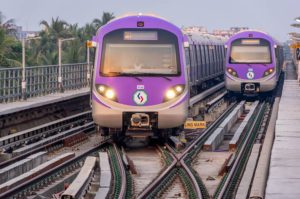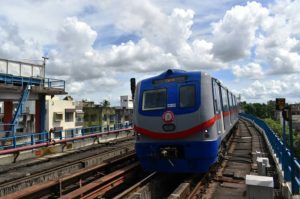PM Modi Inaugurates 3 New Kolkata Metro Corridors: The inauguration of three new Kolkata Metro corridors by Prime Minister Narendra Modi has been hailed as a defining moment in the city’s modern development. For decades, Kolkata has struggled with overcrowded roads, inconsistent public transport, and limited access between its suburban belts and the city center. The launch of these metro routes is expected to drastically reduce travel times, particularly the much-anticipated direct connection to the airport, cutting commutes from nearly two hours during peak traffic to just 30 minutes. This transformative step is not merely an infrastructural milestone—it represents a significant shift in how Kolkata envisions its future as a global metropolitan hub.
Experts note that the benefits will extend far beyond transport convenience. By connecting residential pockets with commercial and industrial hubs, the metro corridors will unlock new avenues of economic activity. Areas that were once considered too remote or underdeveloped are now expected to experience a surge in housing demand, with improved accessibility making them attractive to both developers and homebuyers. For professionals, students, and daily commuters, the new routes will provide reliable and affordable connectivity, reducing dependency on private vehicles and easing the city’s notorious traffic congestion.

The excitement among citizens is palpable. Local businesses, from small shops to larger enterprises, are already gearing up for the anticipated footfall. With easier access to markets, educational institutions, and workplaces, the city’s socio-economic balance could tilt in favor of inclusivity. Urban planners argue that Kolkata’s metro expansion marks a decisive step in reducing socio-spatial inequality, as suburban residents will now enjoy the same access to opportunities as those in central neighborhoods.
Transformative Boost: Real Estate Boom Anticipated Across Connected Corridors
The real estate sector is expected to be one of the biggest winners of this metro expansion. Developers are already eyeing suburban zones like Rajarhat, New Town, Barasat, and Garia as prime investment destinations. With faster links to the airport and city center, these areas are being rebranded as future-ready neighborhoods ideal for both affordable and premium housing. Property consultants predict a steady rise in demand for apartments and office spaces, with some estimating a 15–20% increase in property values over the next two years.


Additionally, commercial real estate is set for a revival. Business districts around EM Bypass, Salt Lake, and New Town are projected to benefit significantly, as seamless metro travel makes them more accessible for both employees and customers. Experts also highlight how improved public transport can attract multinational corporations and startups to establish bases in Kolkata, elevating the city’s status as a competitive economic hub in eastern India. The corridors, therefore, are not just about transportation—they could reshape Kolkata’s economic geography.
PM Modi Inaugurates 3 New Kolkata Metro Corridors: Environmental and Social Benefits to Transform City Life
Beyond economic prospects, the metro expansion holds strong environmental promise. A shift from road-based transport to mass transit is expected to lower vehicular emissions, significantly improving Kolkata’s air quality. Public health experts believe that reduced congestion and cleaner air could enhance overall well-being in a city that often battles pollution.


The social benefits are equally significant. Affordable metro fares ensure that the service remains inclusive, enabling people across different income groups to access education, jobs, and healthcare without the burden of expensive travel. Women commuters, in particular, see the expansion as a step towards safer and more reliable mobility.
In conclusion, the inauguration of the new metro corridors is more than a symbolic achievement—it is a reimagining of Kolkata’s future. From real estate growth and job creation to environmental sustainability and social inclusivity, the impact is multi-dimensional. With 2025 marking this milestone, the metro corridors are poised to redefine how the city moves, works, and lives for generations to come.
🔗 External References for Context:
- Kolkata Metro Rail Corporation
- Ministry of Housing and Urban Affairs
- Kolkata Metropolitan Development Authority
Also read: Home | Channel 6 Network – Latest News, Breaking Updates: Politics, Business, Tech & More

